 Your new post is loading...
 Your new post is loading...

|
Scooped by
DocBiodiv
|
Plusieurs études scientifiques soulignent quelles sont les priorités en matière de conservation de la nature pour la prochaine décennie. Protéger 30 % de la planète d’ici à 2030. Telle est l’ambition qui semble se dessiner en matière de conservation de la nature. Le projet de cadre mondial qui doit être négocié lors de la 15e édition de la Conférence des parties (COP) de la Convention des Nations unies sur la diversité biologique en 2021, dont la version actualisée a été publiée le 1er septembre, affiche cet objectif.

|
Scooped by
DocBiodiv
|
The naturalist uses a UN event to call on world leaders to do more to protect nature. Craig Bennett, chief executive of The Wildlife Trusts, said "a much greater level of urgent action" was needed to put nature into recovery, including rescuing wildlife sites currently in decline. The government figure of 26% includes national parks and areas of outstanding natural beauty (AONBs), which are more about how our landscape looks as opposed to the state of nature within them, he said. He told BBC News: "The reality is, at best what's being managed for nature at the moment is only 10%. Even according to the government's own advisers on nature, they say half of that is in a poor condition, so it's nearer 5%. We've got a mountain to climb if we're really going to put nature into recovery in this country and reach the Prime Minister's target by 2030."

|
Scooped by
DocBiodiv
|
Protected areas (PAs) are the cornerstones of global biodiversity conservation efforts, but to fulfil this role they must be effective at conserving the ecosystems and species that occur within their boundaries. Adequate monitoring datasets that allow comparing biodiversity between protected and unprotected sites are lacking in tropical regions. Here we use the largest citizen science biodiversity dataset – eBird – to quantify the extent to which protected areas in eight tropical forest biodiversity hotspots are effective at retaining bird diversity. We find generally positive effects of protection on the diversity of bird species that are forest-dependent, endemic to the hotspots, or threatened or Near Threatened, but not on overall bird species richness. Furthermore, we show that in most of the hotspots examined this benefit is driven by protected areas preventing both forest loss and degradation. Our results provide evidence that, on average, protected areas contribute measurably to conserving bird species in some of the world’s most diverse and threatened terrestrial ecosystems. Assessing the effectiveness of protected areas requires sufficient monitoring data inside and outside of protected areas; such data are lacking in many tropical regions. Here the authors use robust citizen science data on bird occupancy to show that protected areas are effective in maintaining bird species diversity across eight tropical biodiversity hotspots.

|
Scooped by
DocBiodiv
|
Suite à une demande du département en 2017, les acteurs et gestionnaires de l’environnement se sont concertés pour améliorer l’efficience de la lutte contre les plantes exotiques envahissantes, enjeu majeur pour la conservation à long terme des milieux naturels. Le CIRAD et le Parc national qui coordonnent cette action, avec l’aide des partenaires, ont mis au point une carte des zones prioritaires d’intervention. Elle découle des enjeux de conservation à l’échelle de l’île, du niveau d’envahissement connu à ce jour sur chaque site, et de nombreux autres paramètres qui conditionnent la faisabilité et l’efficacité de chantiers de lutte.

|
Scooped by
DocBiodiv
|
Grâce à de fortes mesures de conservation, le panda n’est aujourd’hui plus en danger. Mais ces mesures n’ont pas permis de sauver les grands carnivores d’Asie, observent des chercheurs de l’université de Pékin.
Gland, Suisse, 4 août 2020 (UICN) – Un total de total de six millions d’euros en financement d’aide d’urgence afin de répondre aux besoins urgents en matière de conservation de la biodiversité provoqués par la pandémie de COVID-19 est mis à disposition par l’Union internationale pour la conservation de la nature (UICN), la Commission européenne et l’Organisation des pays d’Afrique, Caraïbes et Pacifique (OEACP). Ces fonds de l’Union européenne seront distribués par le biais de deux programmes complémentaires gérés par l’UICN. Ils sont destinés à atténuer les impacts de la pandémie sur la gestion des aires protégées et des espèces menacées.

|
Scooped by
DocBiodiv
|
Face à l’anthropisation croissante des milieux aquatiques, la communauté internationale s’est fixée comme objectif d’évaluer, et de surveiller l’état écologique des eaux de surface et souterraines. En France et plus largement en Europe, la Directive Cadre sur l’Eau viendra appuyer cet objectif (...) En ce sens, des indices biologiques (ex : indice poisson rivière ; indice invertébrés multi-métrique) ont été développés pour les cours d’eau afin d’évaluer les sites qui sont sains (bon état écologique) ou significativement dégradés (mauvais état écologique). Cependant, ces indices biologiques ne permettent pas d’identifier les causes (pressions d’origine anthropique) à l’origine de la dégradation des sites en mauvais état, limitant alors les actions de conservation et de restauration des gestionnaires de l’environnement visant à atteindre le bon état écologique. Pour pallier ces lacunes, une collaboration scientifique menée par l’Université de Lorraine, impliquant plusieurs organismes de recherche (INRAE, CNRS, MNHN), et financée par l’Office Français de la Biodiversité, propose un outil de diagnostic des pressions d’origine anthropique à travers l’étude des communautés piscicoles.

|
Scooped by
DocBiodiv
|
We might be in the middle of an extinction crisis, but Indigenous Peoples can show us how to protect biodiversity. Around a quarter of global land area is owned, managed, used, or occupied by Indigenous Peoples. These territories are located across the world, with a particular concentration in the Americas. A study from the University of British Columbia (UBC) expanded on the findings of the UN report, examining how Indigenous-managed lands “play a critical role in helping species survive.” The report (IPBES) found that in areas held or managed by Indigenous Peoples and local communities (non-indigenous people considered to have strong ties to the land) the ecological decline was far less severe - and in some cases, had been avoided altogether.

|
Scooped by
DocBiodiv
|
Préserver voire restaurer la biodiversité nécessite de gérer de manière écologique les espaces urbains, à commencer par les espaces verts, mais aussi les espaces naturels, forêts, espaces agricoles ou littoraux. Et pour mesurer les résultats comme pour orienter finement la gestion, l’observation de la nature est indispensable, via l’intervention de spécialistes mais aussi la...

|
Scooped by
DocBiodiv
|
VEGELITES est un projet trisannuel novateur qui a pour objectif de cartographier finement les végétations des estuaires situées dans le Parc naturel marin des estuaires picards et la mer d’Opale grâce à un système de télédétection (interprétation d’images satellites) et de définir les pratiques de gestion optimales pour ces végétations et de sensibiliser l’ensemble des publics.

|
Scooped by
DocBiodiv
|
new agreement is being negotiated under the 1982 United Nations Convention on the Law of the Sea (UNCLOS) to provide legally binding mechanisms to protect the marine environment and to conserve and ensure the sustainable use of marine biodiversity on the high seas (international waters in areas beyond national jurisdiction) (1). One of the suggested objectives in the current draft text is to “apply an approach that builds ecosystem resilience to the adverse effects of climate change” when applying area-based management tools (ABMTs), including marine protected areas (MPAs).

|
Scooped by
DocBiodiv
|
Le Plan Loire grandeur nature IV arrive à son terme fin 2020. Découvrez, au travers de cette plaquette, un premier bilan des actions de préservation et de restauration des écosystèmes du bassin ligérien (2014-2019). Ce document montre notamment l’implication des Conservatoires d’espaces naturels dans la préservation des zones humides du bassin et leur lien avec la trajectoire du plan Loire. L’effet levier des fonds européens dans l’approche de gestion multi-acteurs, à cette échelle, ressort également des chiffres recueillis.

|
Scooped by
DocBiodiv
|
Tous les cours actuellement disponibles : - MOOC Gestion des aires protégées
- MOOC Suivi écologique
- MOOC Application des lois
- MOOC Conservation des espèces
- MOOC Valorisation des ressources
- MOOC Nouvelles technologies
- MOOC Développement durable
|

|
Scooped by
DocBiodiv
|
La conférence constitue une occasion idéale d’établir un programme en faveur de la conservation du Pacifique pour les quatre à sept prochaines années, ancré dans le Pacifique et initié à l’échelle régionale.
Ce programme doit être cohérent avec les Stratégies Nationales pour la Biodiversité identifiées par les États membres océaniens. Il doit également être en lien avec les engagements pris en matière de conservation par les membres océaniens, parties notamment à la Convention sur la Diversité Biologique (CDB) et à d’autres accords internationaux liés à l’environnement.

|
Scooped by
DocBiodiv
|
Biodiversity loss is a social and ecological emergency, and calls have been made for the global expansion of protected areas (PAs) to tackle this crisis. It is unclear, however, where best to locate new PAs to protect biodiversity cost-effectively. To answer this question, we conducted a spatial meta-analysis by overlaying seven global biodiversity templates to identify conservation priority zones. These are then combined with low human impact areas to identify cost-effective zones (CEZs) for PA designation. CEZs cover around 38% of global terrestrial area, of which only 24% is currently covered by existing PAs. To protect more CEZs, we propose three scenarios with conservative, moderate, and ambitious targets, which aim to protect 19, 26, and 43% of global terrestrial area, respectively.

|
Scooped by
DocBiodiv
|
Les élus ont visité récemment la réserve naturelle de la baie de l'Aiguillon. L'objectif de cette visite était de mieux connaître l'histoire et le patrimoine de ce lieu unique et magnifique et ainsi de mieux en appréhender les enjeux.
Ils étaient accompagnés de Régis Gallais de l'OFB, l'Office français de la biodiversité et de Jean-Pierre Guéret de la LPO, la Ligue de protection des oiseaux, les deux structures qui gèrent conjointement cette réserve naturelle, et de Alain Texier, du Parc naturel régional du Marais poitevin dont fait partie la réserve.
Rappelons que la réserve naturelle de la Baie de L'Aiguillon a été créée en 1996 côté vendéen et 1999 côté Charente-Maritime et s'étend sur un espace de près de 5.000 hectares. Ce statut de réserve naturelle confère une protection à cet espace sensible puisque la règle commune à toutes les réserves naturelles est que leur territoire ne peut-être ni détruit, ni modifié.

|
Scooped by
DocBiodiv
|
Tropical coral reefs are subject to multiple pressures from both natural and anthropogenic sources. These pressures have caused widespread declines in reef health, resulting in the increased use of spatial management tools such as marine protected areas (MPAs). MPAs have proven generally effective if well designed and enforced, but there are limited long-term studies investigating how the presence of small-scale MPAs affects fish populations and reef communities. Using a 12-year time series, we found that small-scale (10–50 ha) community-managed MPAs along the Danajon Bank of the Philippines preserved average fish biomass within their boundaries over time relative to surrounding fished reefs. Unprotected areas are, however, showing significant long-term biomass decline. MPAs were also found to preserve more key trophic groups and larger-bodied commercially targeted reef fish families.

|
Scooped by
DocBiodiv
|
As both a flagship and umbrella species, the giant panda (Ailuropoda melanoleuca) is one of the most heavily invested species in conservation. Here, we report the wide distribution range retreat of the leopard (Panthera pardus, 81% loss), snow leopard (P. uncia, 38%), wolf (Canis lupus, 77%) and dhole (Cuon alpinus, 95%) from protected areas in the giant panda distribution range since the 1960s. The present findings indicate the insufficiency of giant panda conservation for protecting these large carnivore species and suggest that future conservation efforts should target restoring ecosystems with high trophic complexity to facilitate the recovery of large carnivore populations. Comparing historical records with contemporary camera trap surveys, the authors report widespread declines in the occurrence of four large carnivore species from protected areas within the distributional range of the giant panda.

|
Scooped by
DocBiodiv
|
Connectivity conservation is essential for managing healthy ecosystems, conserving biodiversity and adapting to climate change across all biomes and spatial scales. Well-connected ecosystems support a diversity of ecological functions such as migration, hydrology, nutrient cycling, pollination, seed dispersal, food security, climate resilience and disease resistance. These Guidelines are based on the best available science and practice for maintaining, enhancing and restoring ecological connectivity among and between protected areas, other effective areas based conservation measures (OECMs) and other intact ecosystems.

|
Scooped by
DocBiodiv
|
By Colin Breen and Crystal Safadi Over the past two decades, Marine Protected Areas (MPAs) have emerged as one of the primary legislative initiatives used to protect the marine environment. Additionally, they are recognised as being an integral management mechanism used to address Climate Change, and can be a driver …

|
Scooped by
DocBiodiv
|
Launched this week to coincide with the Virtual Ocean Dialogues deep dive panel on Ocean Protection, the comic-style booklet uses visual storytelling to clarify when biodiversity protection really begins and an MPA can be counted towards the global target. So, while it may take us back to the nautical Adventures of Tintin, the story has a timely and critical purpose: to end the confusion over different types and stages of ocean protection that is interfering with clear accounting and decisions. This clarity will be vital for integrating marine protection into post-COVID-19 recovery plans.

|
Scooped by
DocBiodiv
|
The protection and sustainable management of habitat trees is an integral part of modern forest nature conservation concepts such as retention forestry. Not only bats and cavity‐nesting birds, bu

|
Scooped by
DocBiodiv
|
Protected areas (PAs) are a key strategy for conserving nature and halting the loss of biodiversity. Our results show that while many PAs are effective, the large focus on increasing terrestrial coverage toward 17% of the earth surface has led to many PAs failing to stem human pressure. This is particularly the case for nonforested areas, which have not been assessed in previous analysis. Thus, we show that relying only on studies of remote-sensed forest cover can produce a biased picture of the effectiveness of PAs. Moving forward beyond the current biodiversity targets, there is a need to ensure that quality rather than quantity is better integrated and measured.

|
Scooped by
DocBiodiv
|
Intact Forest Landscapes (IFLs) are critical strongholds for the environmental services that they provide, not least for their role in climate protection. On the basis of information about th
|



 Your new post is loading...
Your new post is loading...




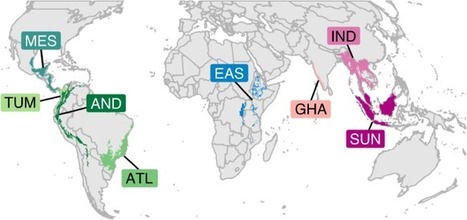
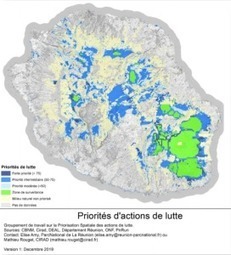
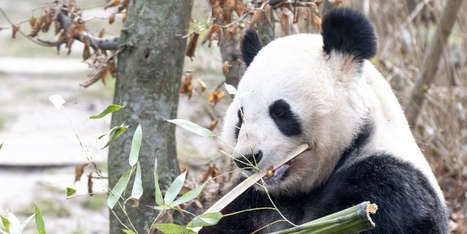


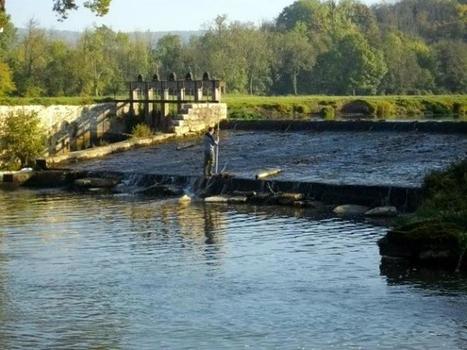


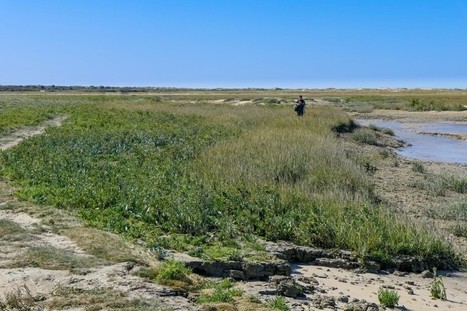



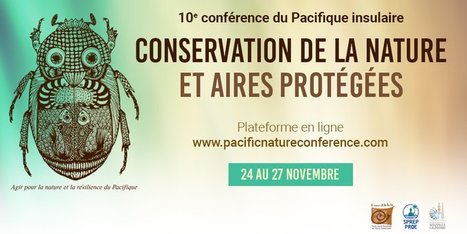
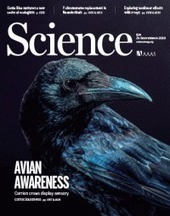
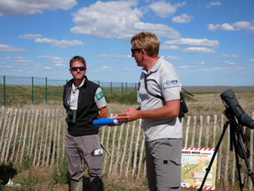


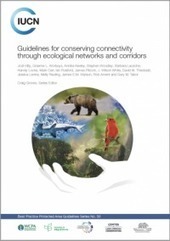



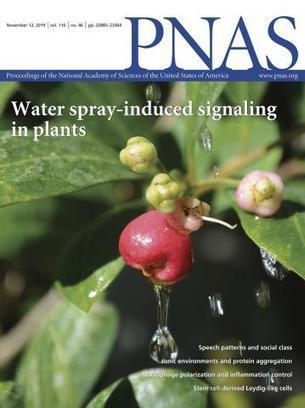
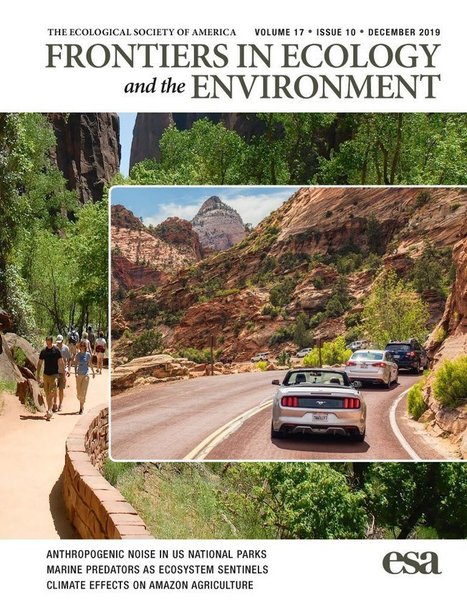






Par Perrine Mouterde, publié le 09 octobre 2020 qui aborde théories, stratégies internationales, politiques, conventions et recherche. Article complet réservé aux abonnés. Pour poursuivre le débat :
- A ''Global Safety Net'' to reverse biodiversity loss and stabilize Earth's climateAsner and D. OlsonE. Dinerstein, A. R. Joshi, C. Vynne, A. T. L. Lee, F. Pharand-Deschênes, M. França, S. Fernando, T. Birch, K. Burkart, G. P. DOI: 10.1126/sciadv.abb2824